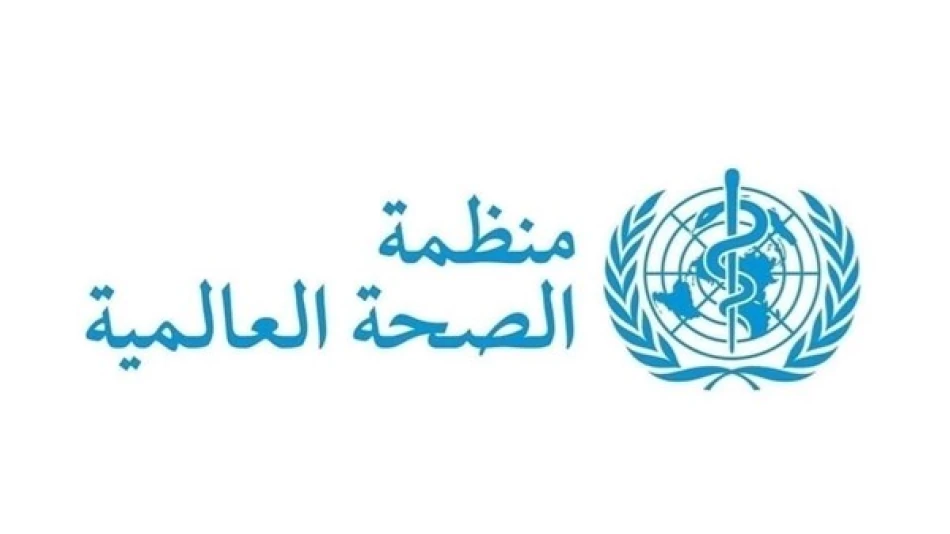
WHO Urges Immediate Action to Prevent Chikungunya Outbreak
Chikungunya Virus Mirrors 2004 Pandemic Path as WHO Sounds Global Alert
The World Health Organization issued an urgent warning Tuesday as chikungunya fever spreads across Indian Ocean islands in patterns strikingly similar to the 2004-2005 outbreak that eventually infected half a million people worldwide. With one-third of Réunion's population already infected and cases spreading to mainland Africa and Europe, health officials fear history may be repeating itself with potentially devastating consequences.
The 2004 Playbook Unfolds Again
Diana Rojas Álvarez, head of WHO's vector-borne viral diseases team, drew stark parallels between current transmission patterns and the major outbreak two decades ago. "Between 2004 and 2005, a major chikungunya outbreak swept through the Indian Ocean, affecting large numbers of people in small islands before spreading worldwide," she said during a Geneva press conference.
The current outbreak began in early 2025 with significant cases reported in Réunion, Mayotte, and Mauritius. The virus has already jumped to Madagascar, Somalia, and Kenya, while imported cases are appearing across Europe with local transmission confirmed in France and suspected cases in Italy.
Why Chikungunya Poses a Unique Challenge
Diagnostic Difficulties
Chikungunya presents a particularly complex challenge for health systems because its symptoms closely mirror dengue fever and Zika virus. This similarity creates diagnostic confusion that can delay proper treatment and tracking efforts, allowing the virus to spread undetected through communities.
Debilitating but Rarely Fatal
While the virus maintains a mortality rate below 1%, its impact extends far beyond death tolls. Transmitted through tiger mosquito bites, chikungunya causes severe fever and acute joint pain that can persist for months or even years. The debilitating nature of these symptoms can cripple workforce productivity and strain healthcare systems even when patients survive.
Álvarez emphasized the scale concern: "When you start counting millions of cases, even less than 1% mortality can represent thousands of deaths."
Global Health Security Implications
The WHO's urgent warning reflects broader concerns about pandemic preparedness following COVID-19. Unlike respiratory viruses, vector-borne diseases like chikungunya require different prevention strategies focused on mosquito control rather than human-to-human transmission barriers.
The organization's call for immediate action stems from recognition that island outbreaks often serve as launching pads for global spread. The 2004 outbreak demonstrated how quickly a virus can jump from isolated island populations to major population centers through modern travel networks.
Prevention Gaps and Public Health Failures
WHO officials highlighted critical prevention failures that mirror mistakes from the previous outbreak. Many residents in affected areas continue to leave standing water in containers like buckets, creating ideal breeding grounds for tiger mosquitoes. Additionally, insufficient use of insect repellents leaves populations vulnerable to bites that could be easily prevented.
These behavioral factors, combined with climate conditions favorable to mosquito breeding, create perfect storm scenarios for rapid virus transmission. The WHO's emphasis on early detection and enhanced prevention capabilities suggests current global preparedness remains inadequate for vector-borne disease threats.
Economic and Travel Implications
The outbreak's expansion beyond Indian Ocean islands raises immediate concerns for tourism-dependent economies and global travel patterns. France's confirmation of local transmission particularly matters given its role as a major European travel hub and its territorial connections to affected Indian Ocean regions.
Unlike previous outbreaks, this resurgence occurs in a post-pandemic world where health authorities and travelers are more aware of disease transmission risks. However, vector-borne diseases present different challenges than respiratory pathogens, potentially requiring new approaches to travel advisories and prevention protocols.
The Window for Action Narrows
The WHO's urgent tone reflects a narrow window for preventing widespread global transmission. With established patterns from 2004 now repeating across the same geographic regions, health officials recognize they have limited time to implement effective containment measures before the virus establishes itself in new populations worldwide.
The organization's call for enhanced detection capabilities and prevention measures represents a critical test of global health system improvements made since COVID-19. Success in containing chikungunya could demonstrate strengthened pandemic preparedness, while failure might expose continued vulnerabilities in addressing diverse disease threats beyond respiratory viruses.
Most Viewed News

 Layla Al Mansoori
Layla Al Mansoori






